|
The Mobile Doppler Lidar and Soundings (MoDLS) facility was designed to rapidly measure fine-scale boundary layer characteristics such as turbulence, winds, and structure. MoDLS highlights a Halo Photonics scanning Doppler Wind Lidar (DWL) mounted to a Chevrolet 3500 flatbed pickup truck. A Radiometrics 35 channel Microwave Profiling Radiometer (MPR) and a telescoping mast for meteorological measurements mounted to the truck. The mast includes 3D sonic winds along with air temperature at 8 meters above ground level with additional in-situ meteorological measurements (temperature/RH, pressure, PM 2.5, and VOC) at 4 meters above ground level. A recent addition to MoDLS is the Vertically Pointing Ka-Band Radar (KaPR) which works complimentary with the DWL to help retrieve drop size distributions. The KaPR employs Quadratic Phase Coding (QPC) and a dual antenna system to achieve a 100% duty cycle, high sensitivity (-50 dBZ at 5 km AGL) and measurement heights down to ~2 m above radar level, with equally-short sample depths down to 2 m. The Ka-band frequency provides considerable flexibility by providing measurements within clouds of all types, precipitation, and clear air sampling (of insects) for support of BL measurements. Although the radar is designed specifically to fit directly onto the bed of MoDLS, the radar is built onto a pallet that makes removing the radar easy. This makes the radar flexible, allowing it to be used on MoDLS, moved to the MIPS platform, or used as a stand-alone instrument. The unique capabilities of KaPr will contribute to a more comprehensive MAPNet facility that is available to the science community. 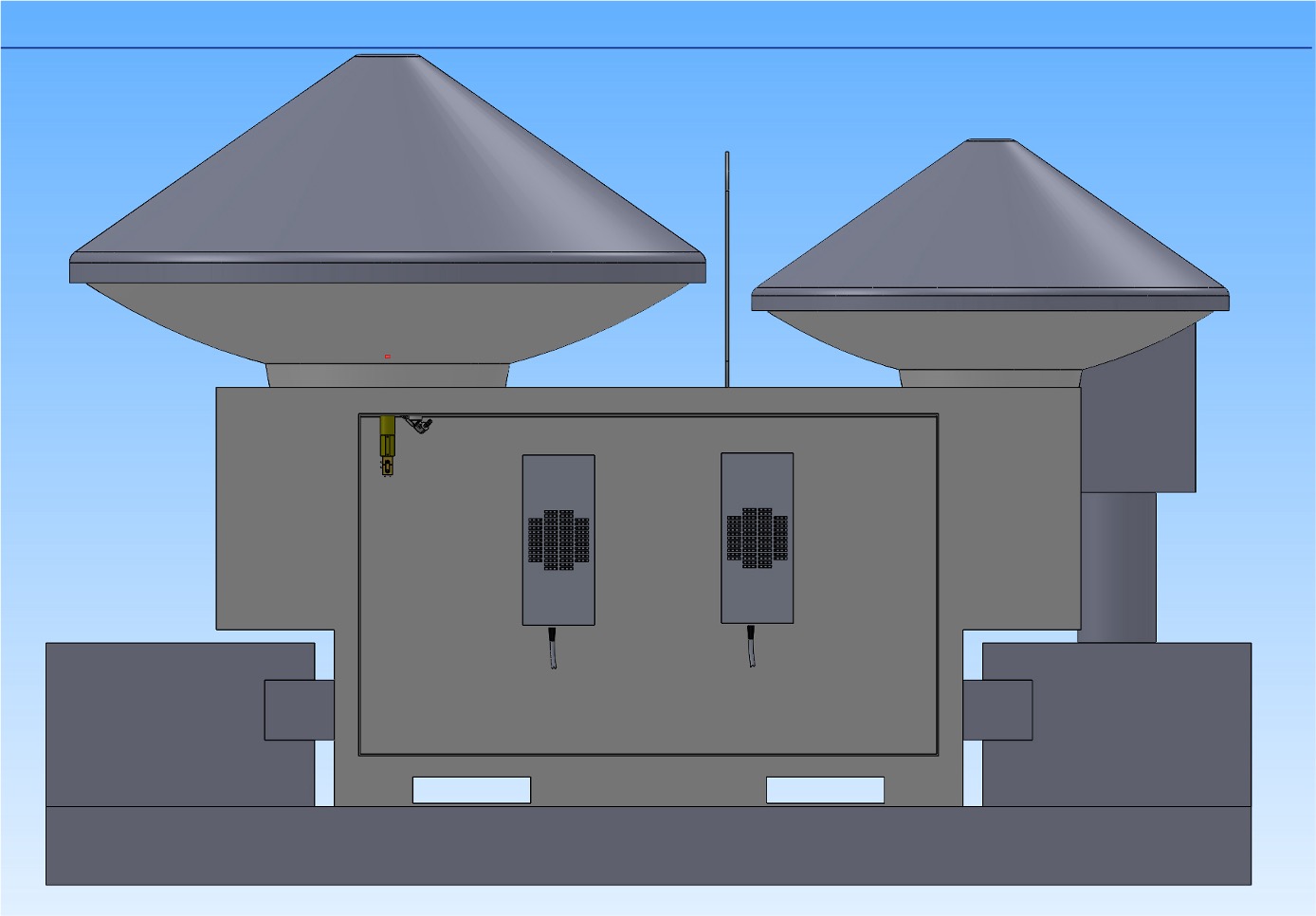
The design of the KaPR. The design is shown looking at the rear of the MoDLS truck bed with the radar placed on top. The radar is designed to be bistatic (the smaller dish being the tranmsit side, larger dish being receive), allowing data to be collected continuously. Undermounted hydraulic jacks are used to level the truck and maintain stability. A computer rack inside the back of the cab holds the control computers and monitors. Helium tank boxes are mounted to the bed of the truck to hold up to 4 large helium tanks when radiosonde soundings accompany the platform. Power is supplied to the instruments and computers via an undermounted Cummins 6kW diesel generator. The truck can accommodate up to three personnel during operations. 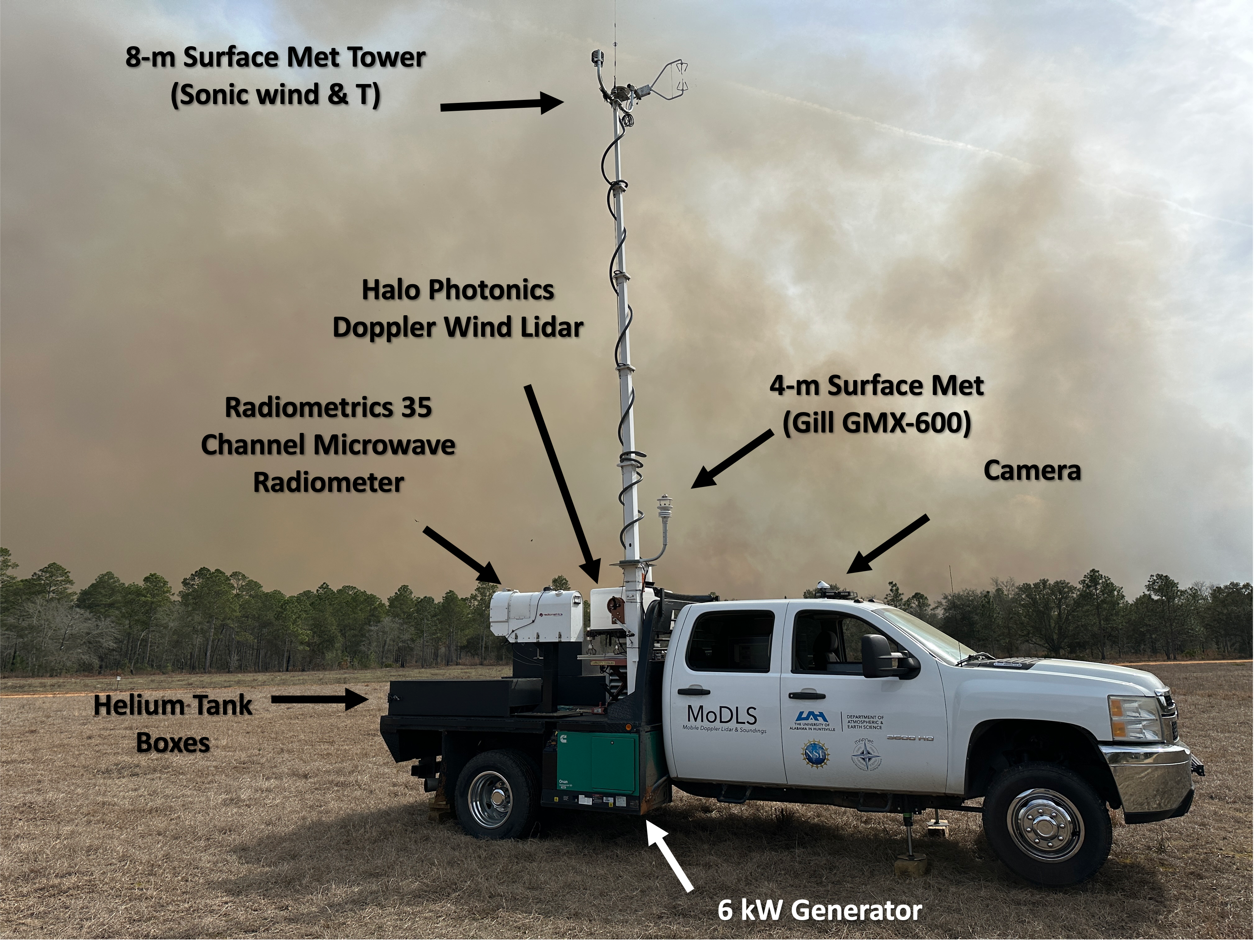
MoDLS deployed at Ft. Stewart for a prescribed burn in Feb 2024. |
The MoDLS Instruments:
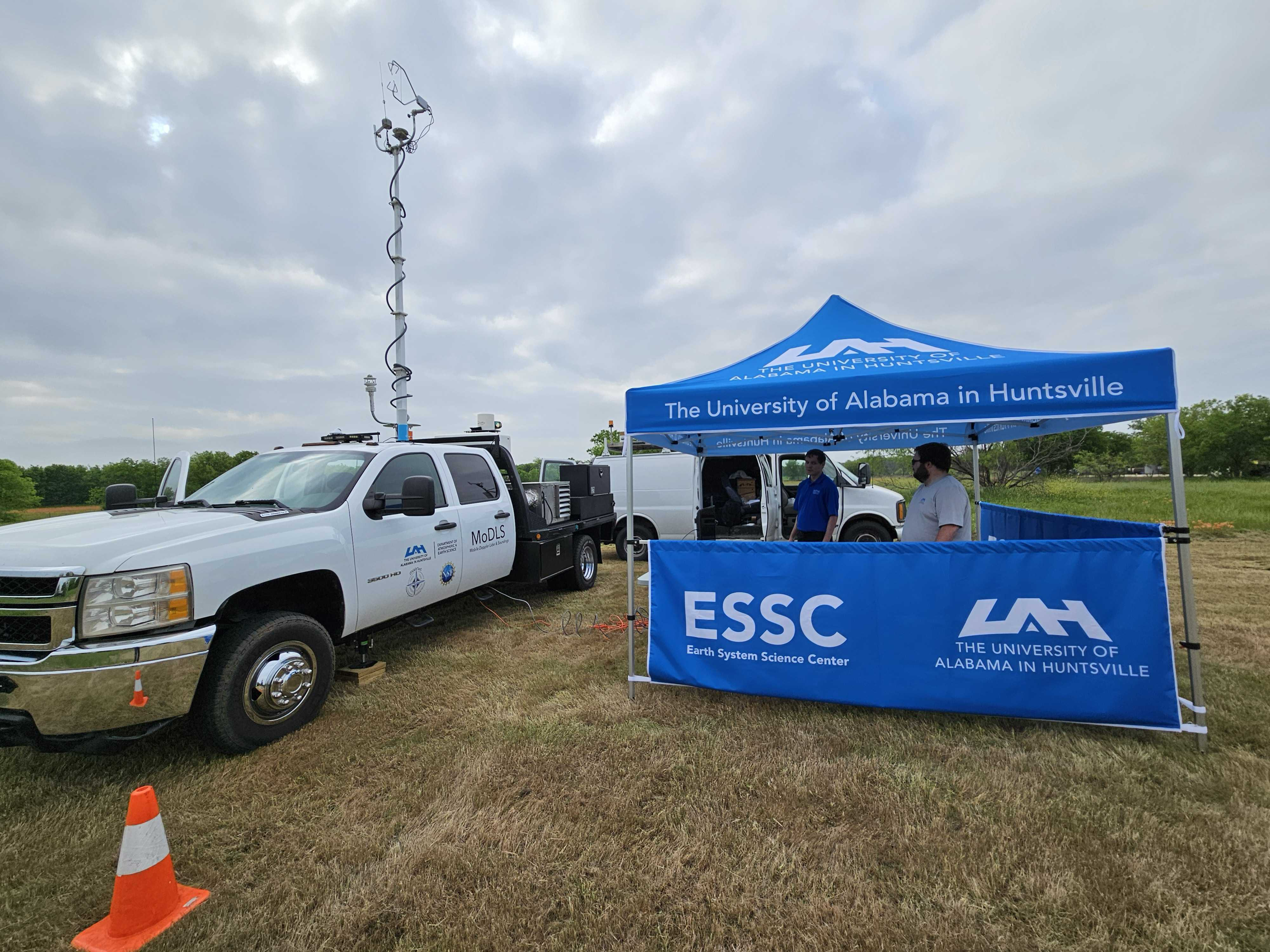
MoDLS deployed and ready for community outreach during the 2024 solar eclipse. 
A Plan Position Indicator (PPI) image from the lidar showing the smoke plume size and structure. Velocity data show SW wind which elongated the smoke plume towards the NE. 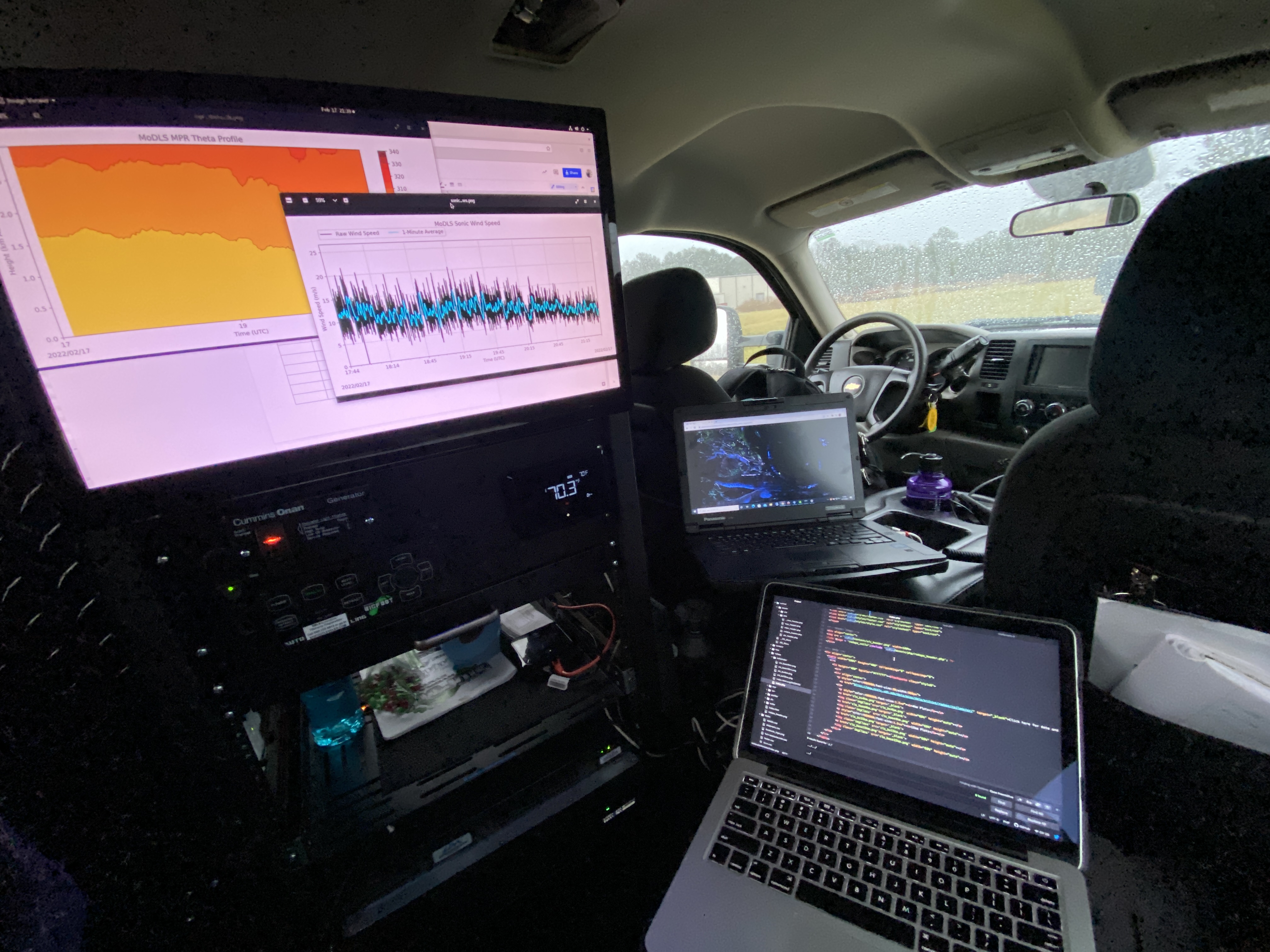
Inside MoDLS during operations. 
Prepping balloon soundings out of MoDLS in support of PERiLS. 
Time vs. height section of Doppler lidar backscatter and vertical motion around the eclipse time. The vertical dashed lines define the eclipse beginning and ending times. The MoDLS Truck Build
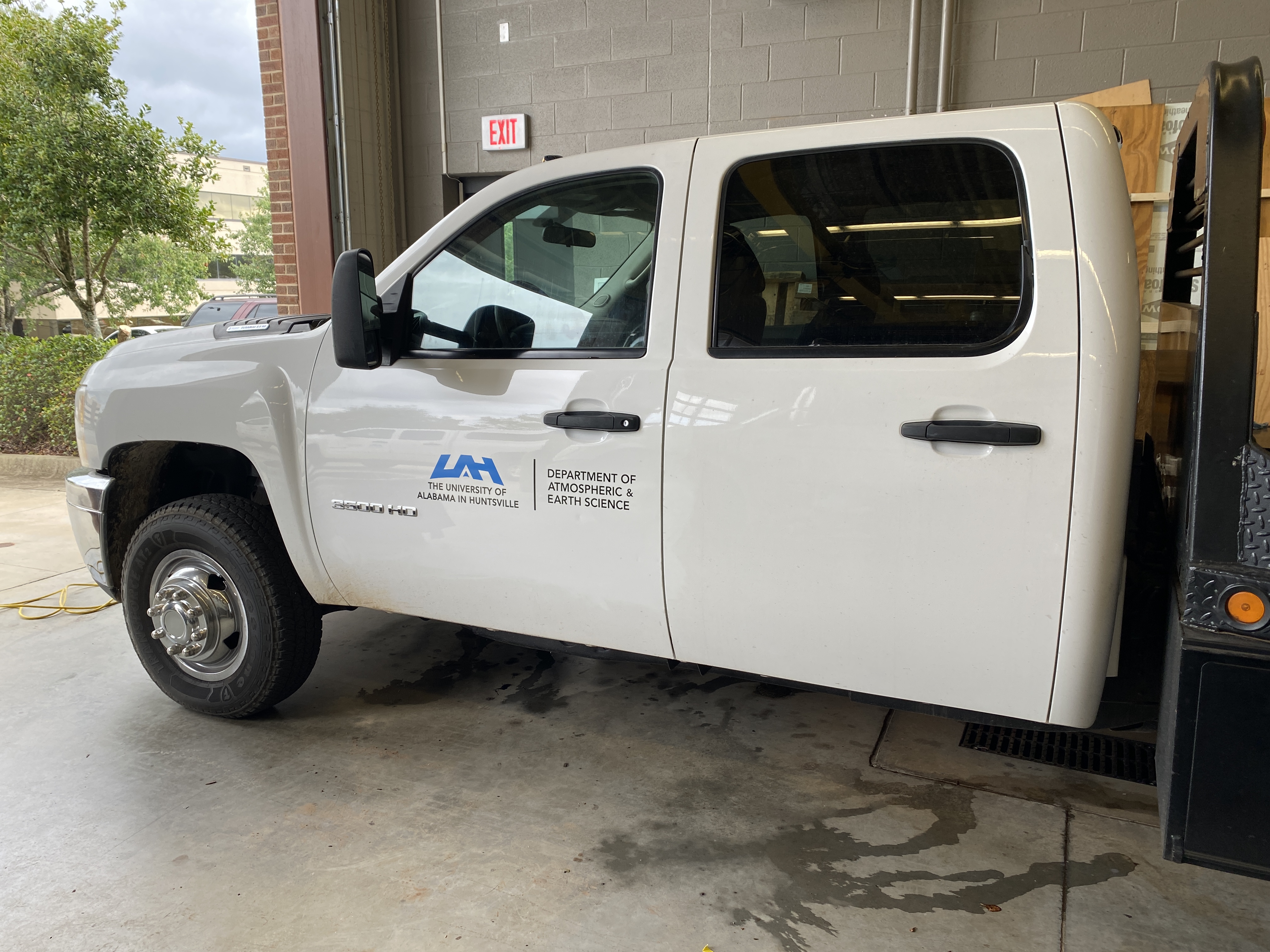
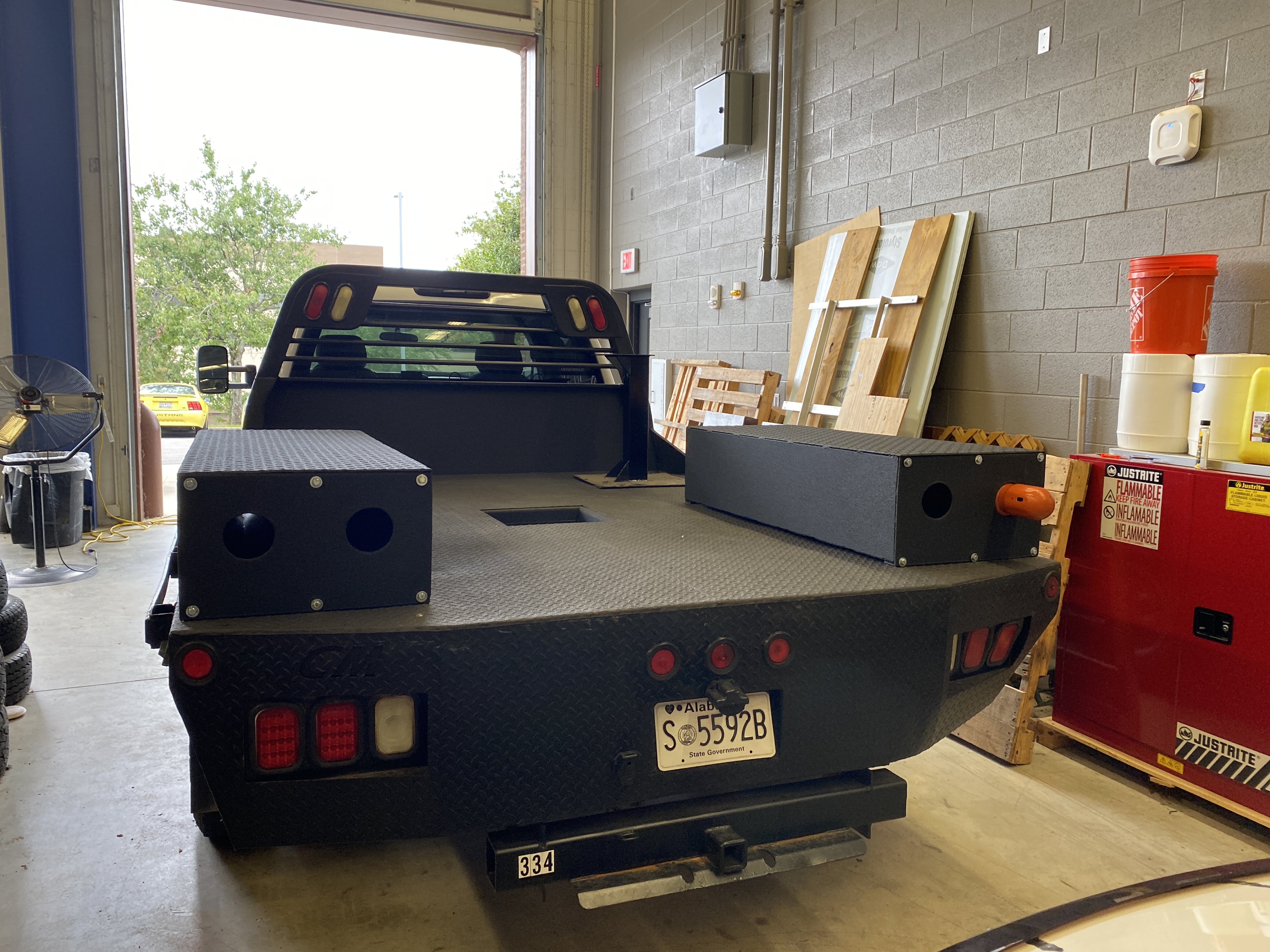
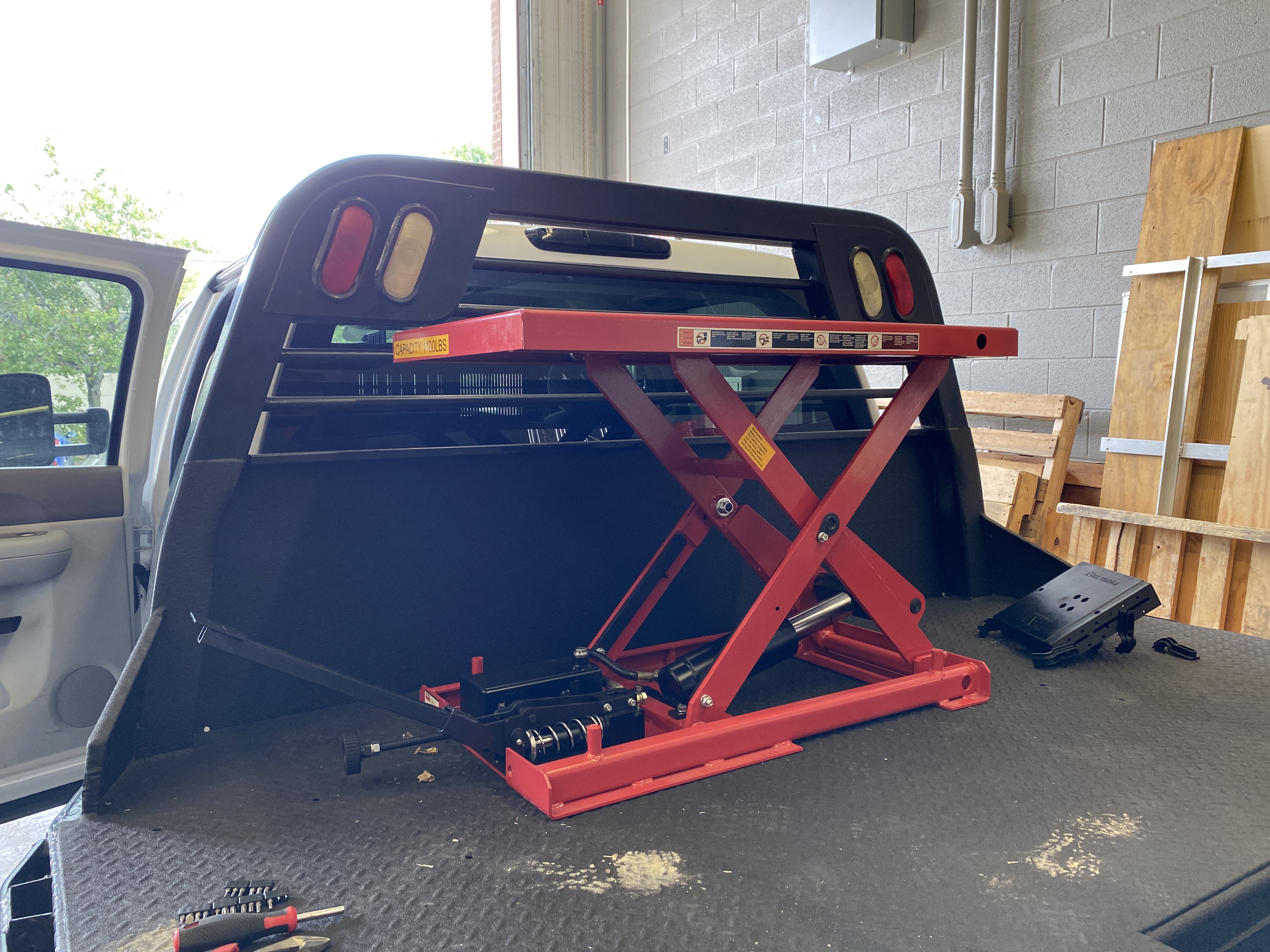
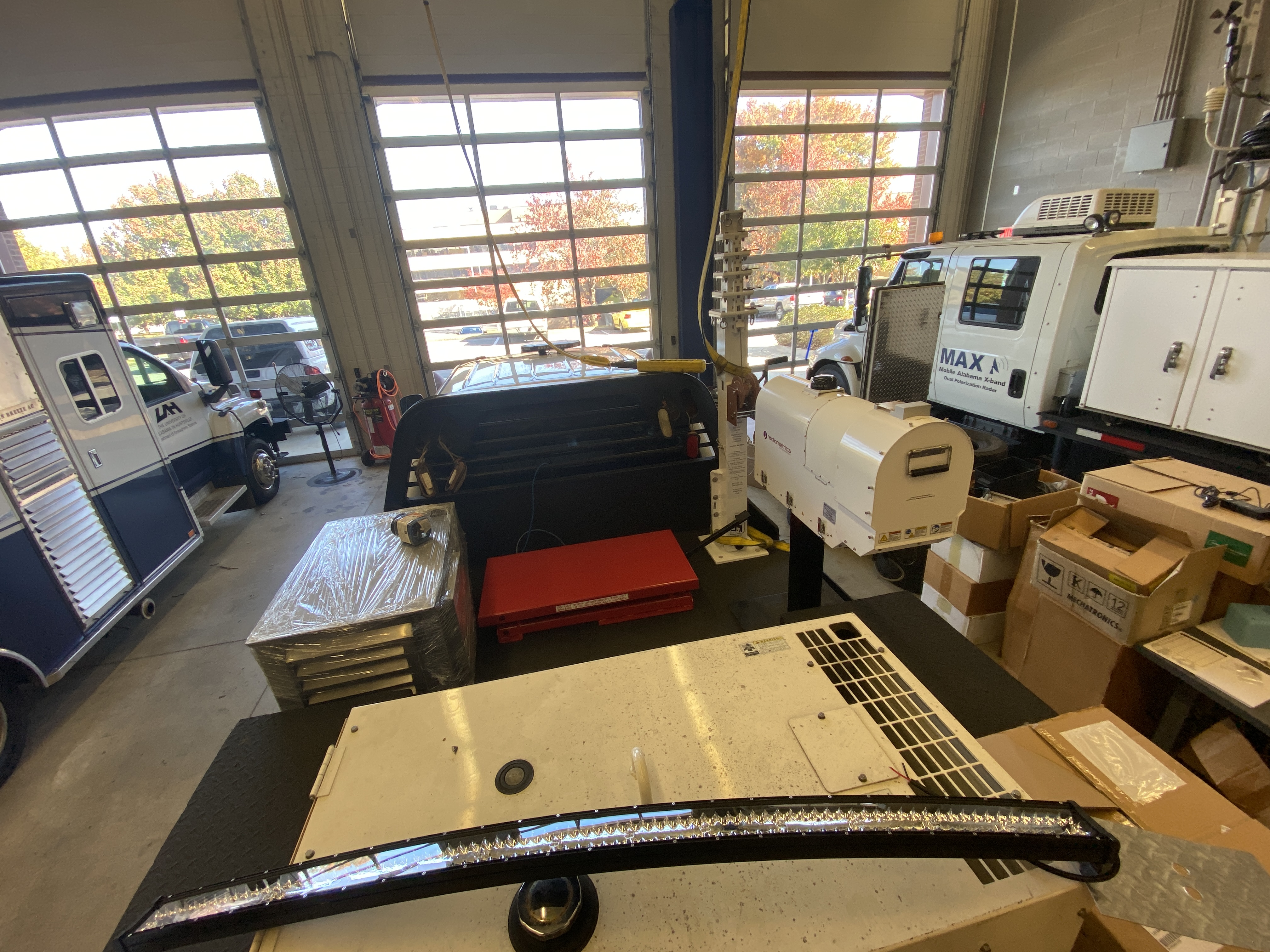
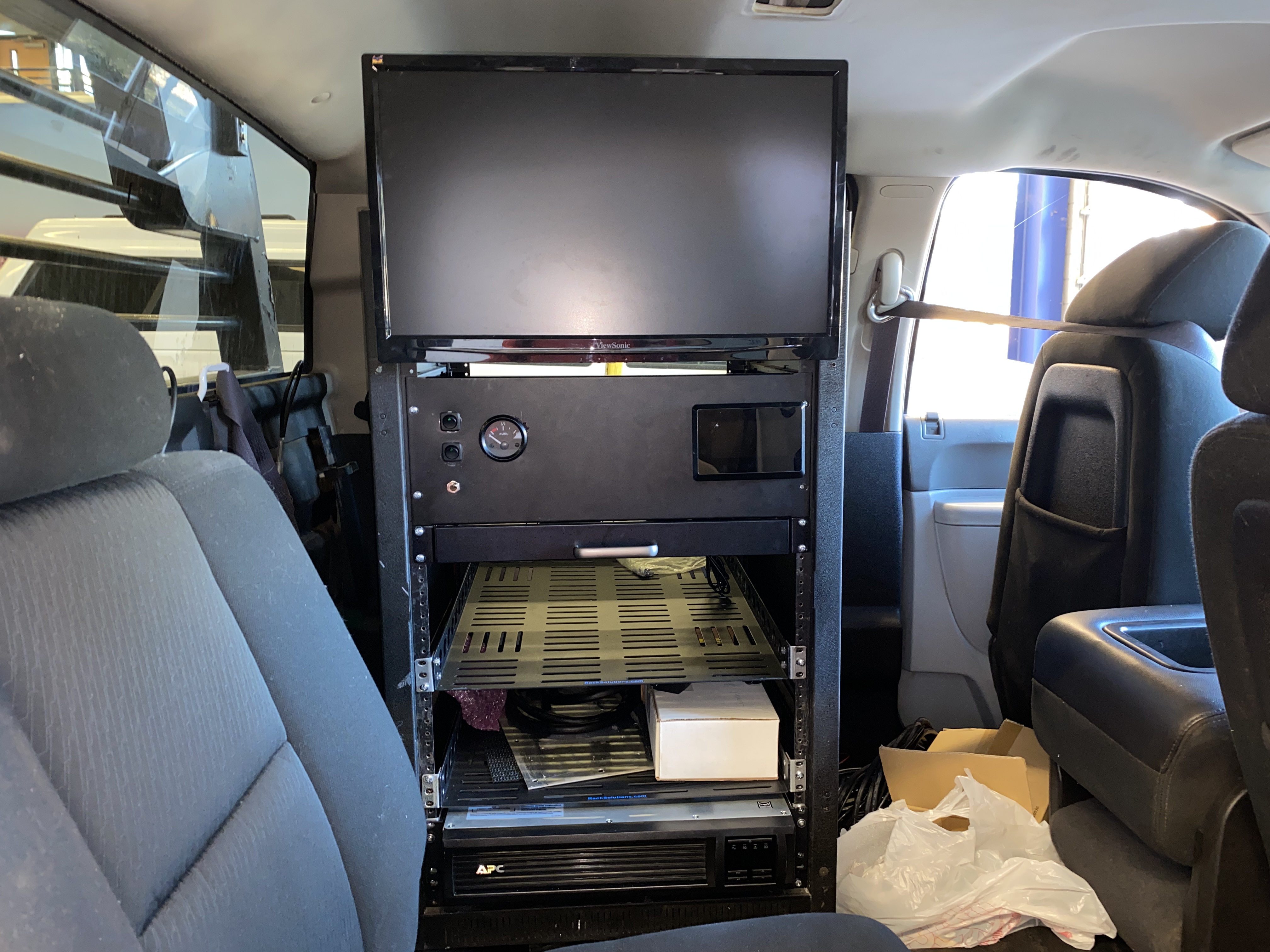
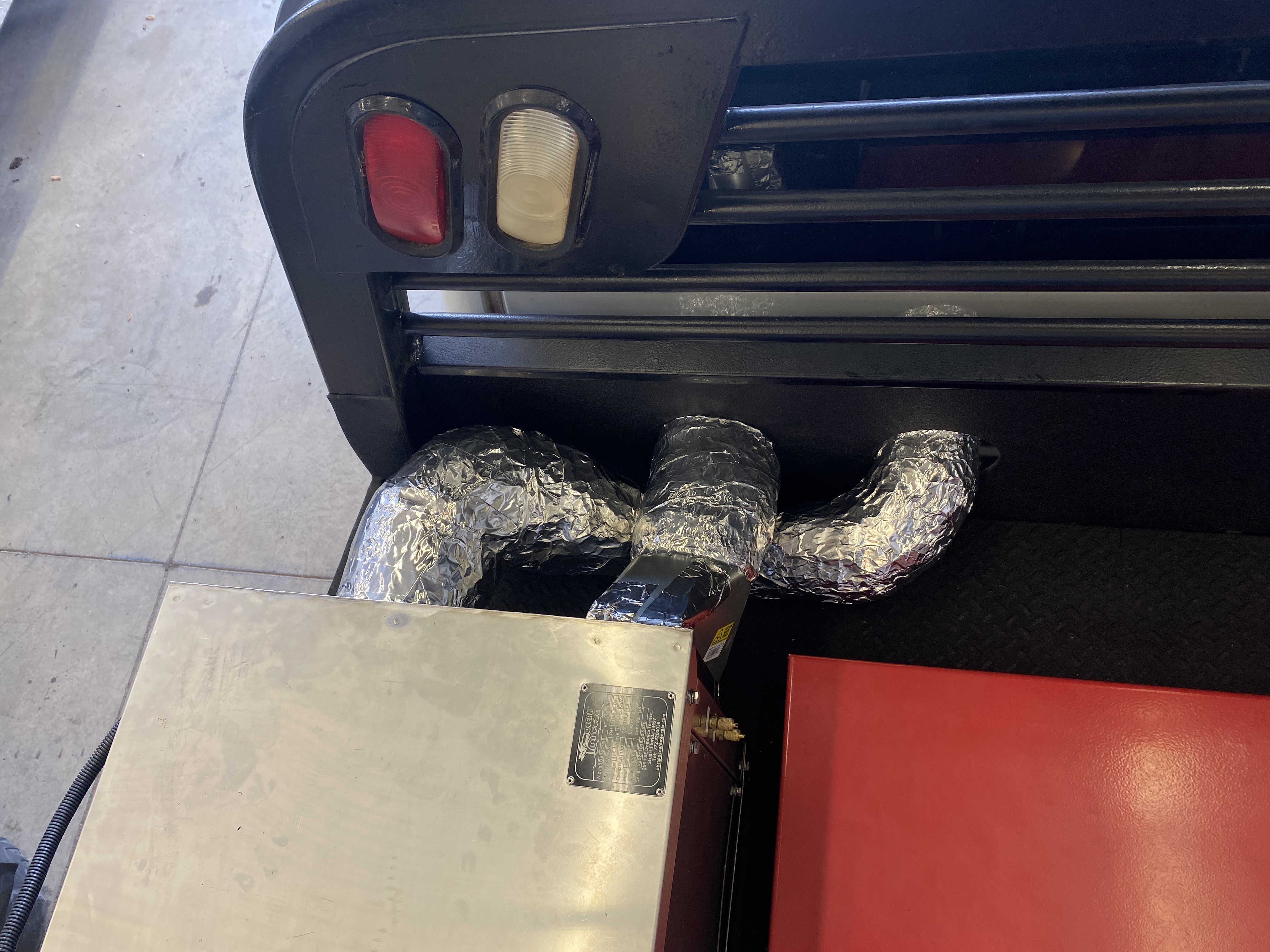
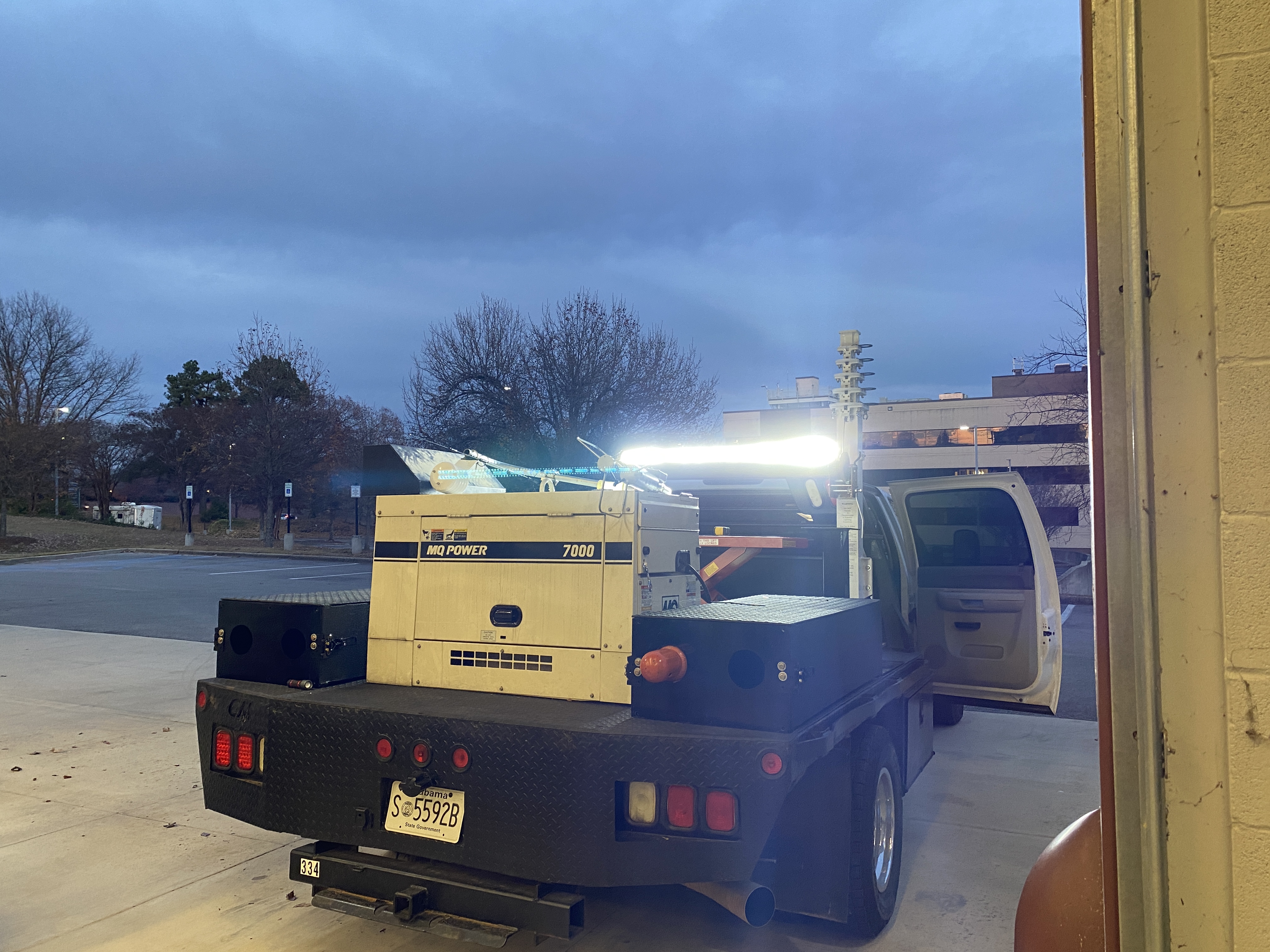

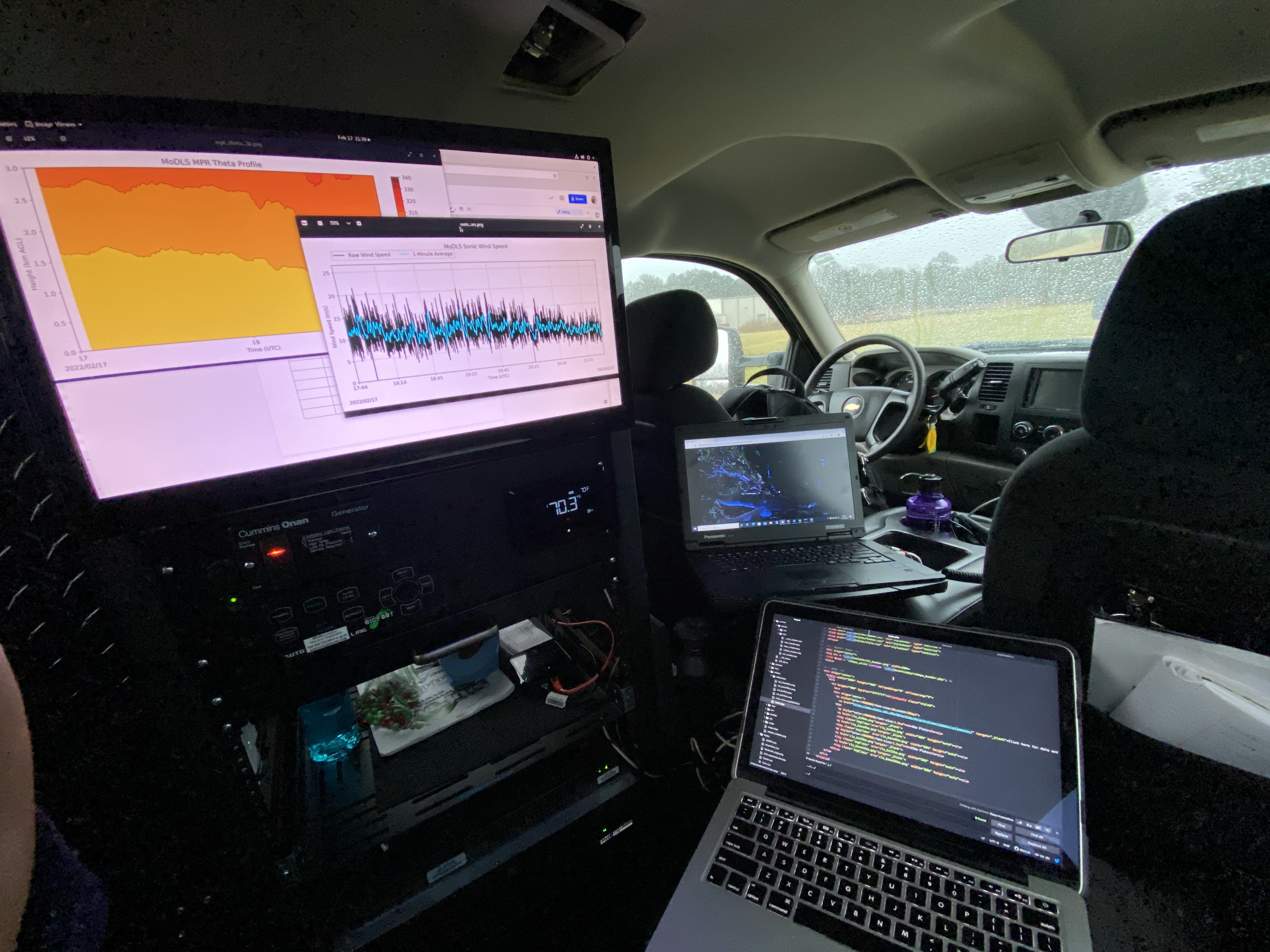

|

